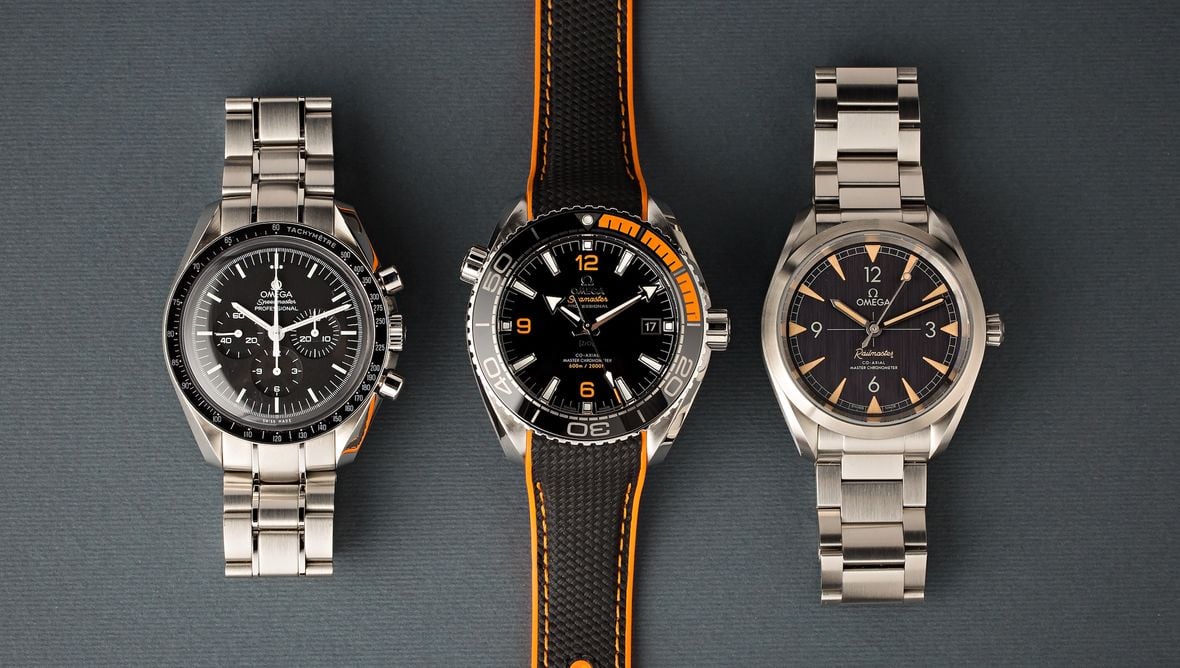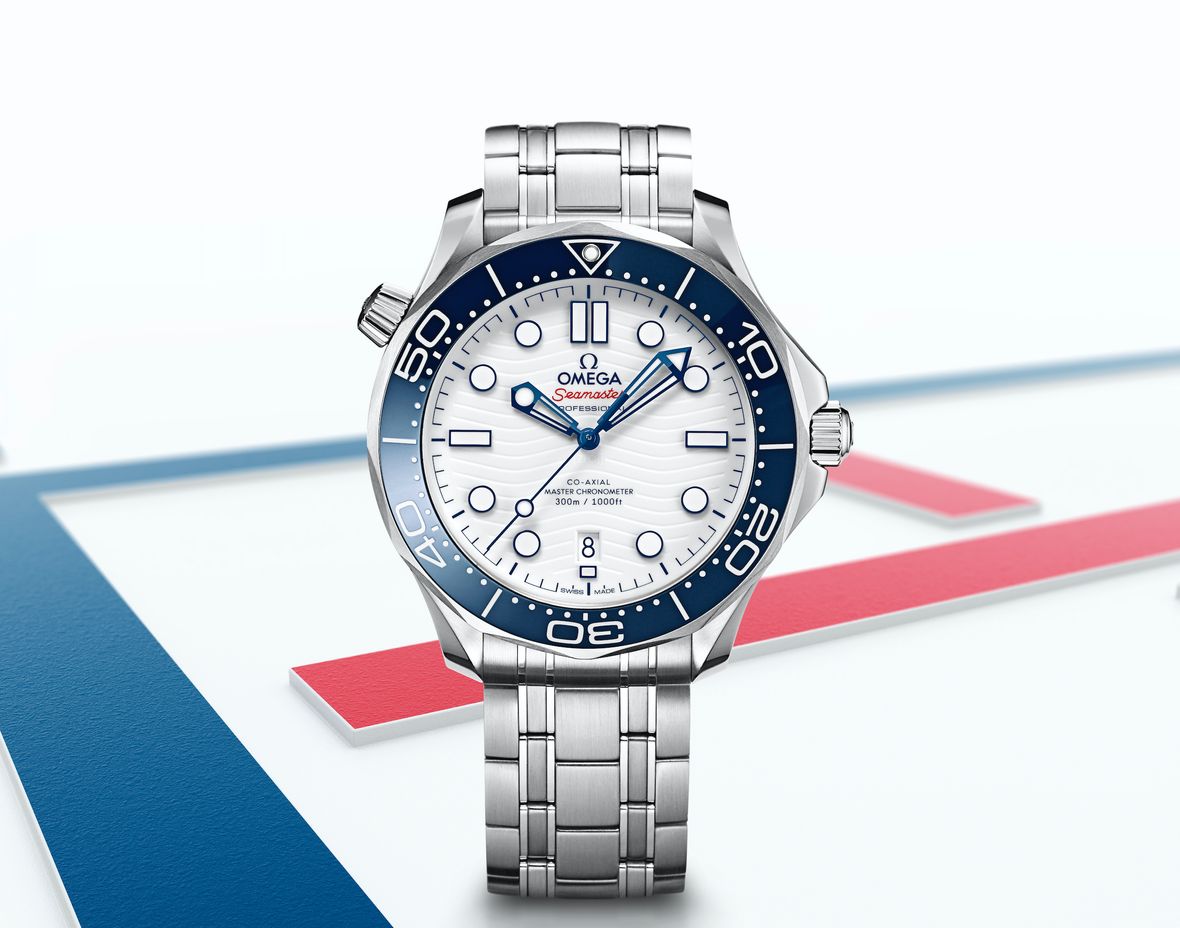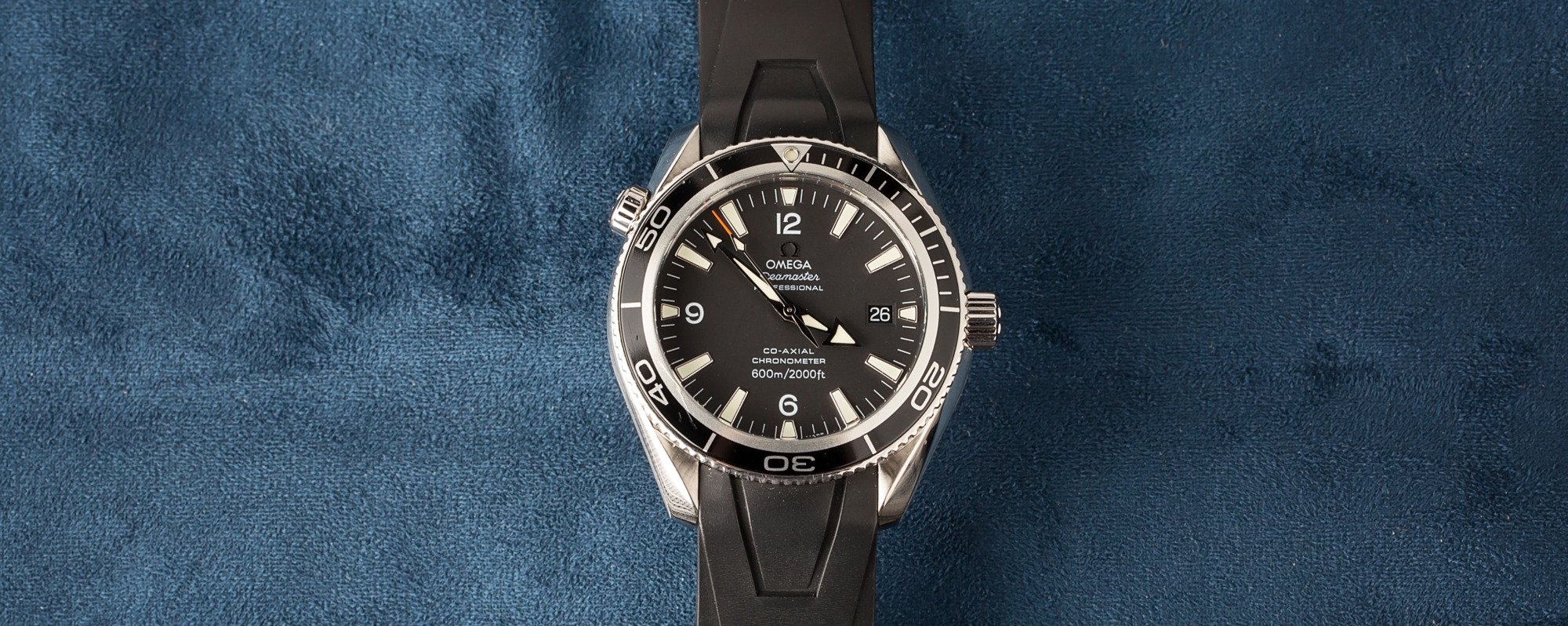Choosing between the Omega Seamaster vs Speedmaster can be a challenge for watch enthusiasts. Both models have earned their place in horological history, with the Seamaster known for its water resistance and the Speedmaster famous for being the first watch worn on the moon.
The Omega Seamaster, introduced in 1948, has been a favorite among divers and adventurers, while also gaining cultural significance through its association with James Bond. The Omega Speedmaster, launched in 1957, has been a preferred choice for astronauts, pilots, and collectors who value its precision and historical significance.
This article aims to provide a comprehensive comparison of the Omega Seamaster and the Omega Speedmaster, helping you understand their similarities, differences, and the factors to consider when making your choice. We will explore their histories, notable models, and specific features, as well as real-world experiences of watch enthusiasts.
By the end of this article, you’ll have a clearer understanding of which timepiece best suits your needs and preferences, ensuring that your choice between the Omega Seamaster and the Omega Speedmaster is one that you’ll cherish for years to come.
Omega Seamaster Overview
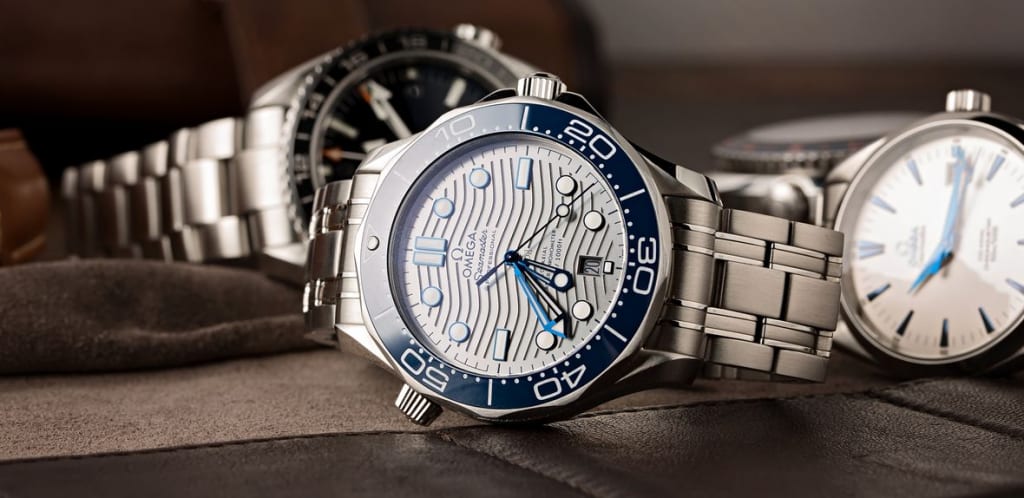
History and Evolution of the Seamaster Line
The Omega Seamaster line has a rich history that dates back to 1948 when Omega introduced the first Seamaster model. Initially designed as a robust and water-resistant watch for military and civilian use, the Seamaster quickly gained popularity among divers and adventurers. Over the years, the Seamaster line has evolved to include various sub-collections, each with its own unique features and design elements.
One of the most significant milestones in the Seamaster’s history came in 1995 when it was chosen as the official watch of James Bond in the movie “GoldenEye.” Since then, the Seamaster has been featured in numerous Bond films, further enhancing its status as a cultural icon and symbol of adventure.
Key Features and Design Elements
The Omega Seamaster is known for its distinctive design elements and features that set it apart from other dive watches. Some of the key features include:
Water resistance: Seamaster models typically offer water resistance ranging from 150m to 600m, making them suitable for various underwater activities.
Helium escape valve: Some Seamaster models feature a helium escape valve, which allows the watch to release built-up helium gases during saturation diving, preventing damage to the watch.
Unidirectional rotating bezel: The Seamaster’s bezel is designed to rotate only counterclockwise, ensuring that elapsed dive time can be accurately tracked.
Luminescent dial and hands: The dial and hands of the Seamaster are often coated with SuperLumiNova, providing excellent legibility in low-light conditions.
Durable construction: Seamaster watches are built to withstand the rigors of underwater use, with materials such as stainless-steel, ceramic, and sapphire crystal contributing to their durability.
Notable Seamaster Models and Their Specifications
Seamaster Diver 300M: A modern classic, the Seamaster Diver 300M features a 42mm case, a ceramic bezel, and is available with various dial colors and strap options. It is powered by the Omega Co-Axial Master Chronometer Calibre 8800.
Seamaster Planet Ocean: Designed for professional divers, the Seamaster Planet Ocean watch offers water resistance up to 600m and features a helium escape valve. It is available in a range of sizes and materials, including stainless steel, titanium, and ceramic.
Seamaster Aqua Terra: A versatile model that combines elegance with sporting capability, the OMEGA Aqua Terra is known for its distinctive “teak” patterned dial and offers water resistance up to 150m. It is available in a variety of sizes, colors, and complications.
Omega Speedmaster Overview
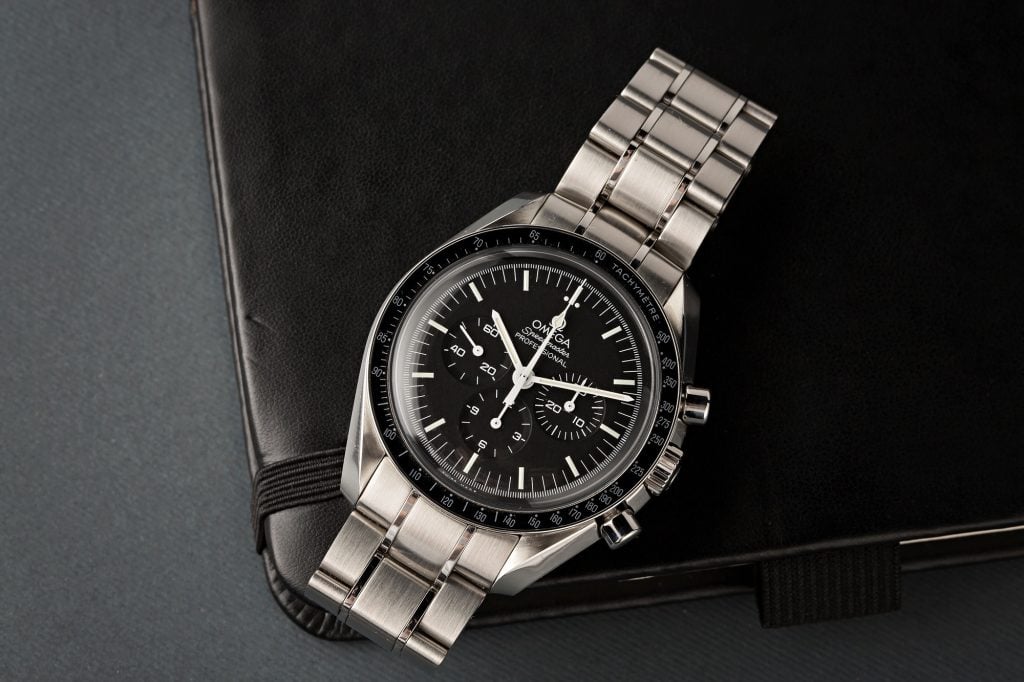
History and Evolution of the Speedmaster Line
The Omega Speedmaster was first introduced in 1957 as a racing chronograph, designed to meet the demands of professional drivers and racing enthusiasts. However, its destiny changed in the 1960s when NASA began searching for a reliable chronograph to use during space missions. After rigorous testing, the Speedmaster was chosen as the official watch for the Apollo missions, earning it the nickname “Moonwatch.”
The Speedmaster’s most famous moment came on July 20, 1969, when Buzz Aldrin wore his Speedmaster Professional during the historic Apollo 11 mission, making it the first watch worn on the moon. Since then, the Speedmaster has been a part of numerous space missions and has become an icon of space exploration.
Over the years, the Speedmaster line has evolved to include various models and limited editions, each with its own unique features and design elements.
Key features and Design Elements
The Omega Speedmaster is known for its distinctive design and features that have remained largely unchanged since its introduction. Some of the key features include:
Chronograph functionality: The Speedmaster’s chronograph function allows for precise timing of events, with sub dials for tracking hours, minutes, and seconds.
Tachymeter scale: The bezel of the Speedmaster features a tachymeter scale, which allows for the calculation of speed based on time traveled over a fixed distance.
Hesalite crystal: Many Speedmaster models feature a hesalite crystal, which is a type of acrylic that is resistant to shattering and provides a vintage look.
Iconic design: The Speedmaster’s black dial with contrasting white markers, along with its three sub dials, has become an instantly recognizable design.
Manual-winding movement: Most Speedmaster models are powered by manual-winding movements, which adds to their vintage appeal and connection to the original Moonwatch.
Notable Speedmaster Models and Their Specifications
Speedmaster Professional (Moonwatch): The classic and iconic Omega Moonwatch features a 42mm case, a hesalite crystal, and is powered by the manual-winding Omega Calibre 1861. It is available with various strap options, including the iconic stainless-steel bracelet.
Speedmaster Racing: Inspired by the Speedmaster’s racing heritage, the Omega Speedmaster Racing models feature a distinctive minute track and are available with various dial colors and strap options. They are powered by the automatic Omega Co-Axial Calibre 9900.
Speedmaster ’57: A tribute to the original Speedmaster from 1957, the OMEGA Speedmaster 57 features a slightly smaller 38.6mm case and is available with various dial colors and strap options. It is powered by the manual-winding Omega Calibre 1861.
Comparing the Omega Seamaster vs Speedmaster
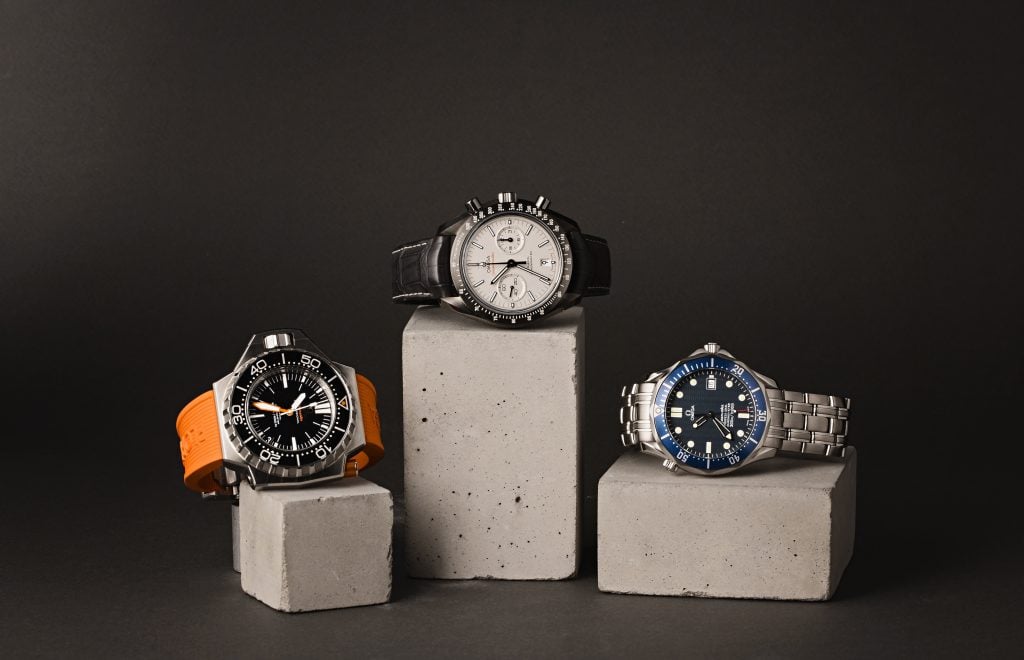
Similarities
Omega’s commitment to precision and quality is evident in both the Seamaster and Speedmaster lines. The brand is known for its dedication to crafting exceptional timepieces that meet the highest standards of watchmaking. This commitment is reflected in Omega’s use of high-grade materials and movements in both models. Seamaster and Speedmaster watches are constructed using premium materials such as stainless steel, ceramic, and sapphire crystal, ensuring durability and longevity. The movements that power these watches are carefully selected for their reliability and accuracy, with many models featuring Omega’s Co-Axial escapement and Master Chronometer certification. Whether you choose a Seamaster or a Speedmaster, you can be assured that you are investing in a timepiece that embodies Omega’s unwavering pursuit of precision and quality.
Differences
While the Omega Seamaster and Speedmaster share a commitment to quality and precision, they differ in their intended purposes and designs. The Seamaster line is primarily designed for underwater use, with models offering impressive water resistance ranging from 150m to 600m. These watches feature unidirectional rotating bezels, which allow divers to track their elapsed time underwater safely. Some Seamaster models also include helium escape valves, enabling the watch to withstand the pressure changes experienced during saturation diving. Additionally, the Seamaster’s dial, and hands are often coated with luminescent material, ensuring excellent legibility in low-light conditions.
In contrast, the Speedmaster line is known for its chronograph functionality and close association with space exploration. The Speedmaster’s design has remained largely unchanged (with some exceptions) since its introduction, with the iconic black dial, three sub dials, and tachymeter scale on the bezel. The tachymeter scale allows for the calculation of speed based on time traveled over a fixed distance, a feature that was initially intended for use in auto racing. However, the Speedmaster’s most famous application has been in space, as it was the first watch worn on the moon and has been used in numerous NASA missions since.
Another key difference between the Seamaster and Speedmaster lies in their case and dial variations. The Seamaster models offer a more diverse range of designs, with options ranging from classic stainless steel to more contemporary materials like ceramic and titanium. The Seamaster line also features a variety of dial colors and styles, catering to a wide range of tastes and preferences. On the other hand, the Speedmaster line tends to stay closer to its original design, with the classic Moonwatch being the most recognizable model. While there are some variations in case materials and dial colors, the Speedmaster’s design remains largely faithful to its roots.
Finally, the Seamaster and Speedmaster differ in their movement options. The Seamaster line primarily features automatic movements, which are convenient for daily wear and offer a longer power reserve. This makes the Seamaster a popular choice for those who prefer the ease and convenience of an automatically wound watch. In contrast, the Speedmaster line, particularly the Moonwatch models, are known for their manual-winding movements. This feature adds to the Speedmaster’s vintage appeal and maintains a connection to the original Speedmaster worn on the moon. However, some newer Speedmaster models, such as the Omega Speedmaster ’57 collections, now feature automatic movements, providing more options for those who prefer the convenience of an automatic watch.
Factors to Consider When Choosing Between the Seamaster and Speedmaster
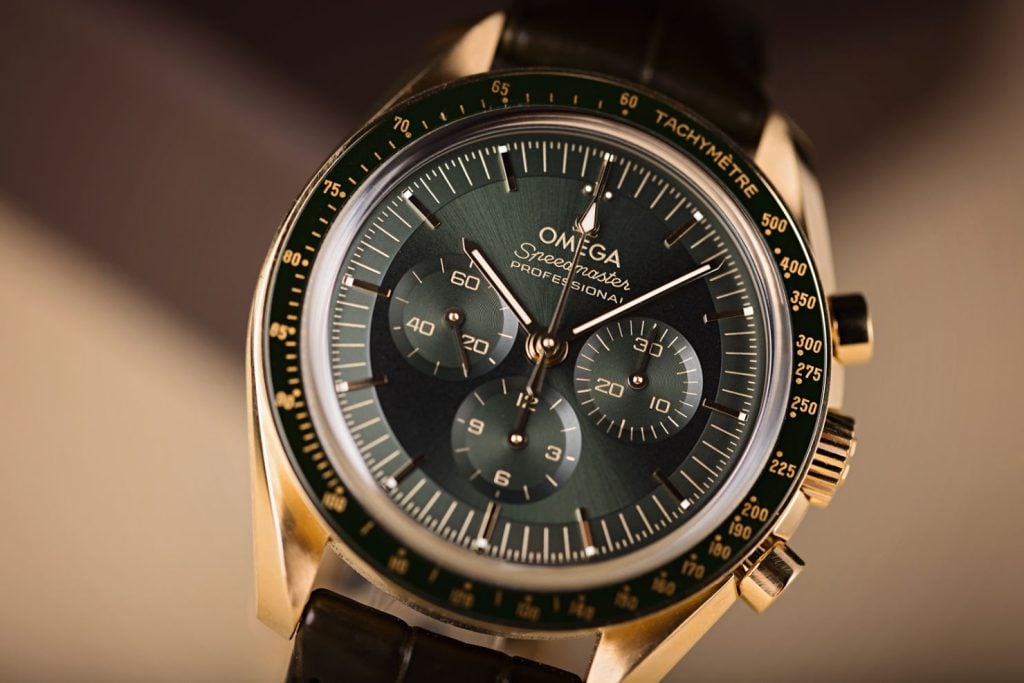
Ultimately, the choice between the Omega Seamaster and Speedmaster comes down to your individual preferences, lifestyle, and financial considerations. By carefully evaluating your needs and desires, you can make an informed decision that will bring you joy and satisfaction for years to come.
Personal style preferences
When choosing between the Omega Seamaster vs Speedmaster, there are several key factors to consider. One of the most important is your personal style and aesthetic preferences. The Seamaster and Speedmaster offer distinct designs that cater to different tastes. The Seamaster line features a more diverse range of styles, from classic and elegant to sporty and modern. With various case materials, dial colors, and strap options, you can find a Seamaster that fits your unique style. The Speedmaster, on the other hand, maintains a more consistent design language, with the iconic Moonwatch being the most recognizable. If you appreciate a vintage-inspired look with a strong connection to history, the Speedmaster may be more appealing.
Intended Use and Lifestyle
Another crucial factor to consider is your intended use and lifestyle. If you are an avid diver or enjoy water sports, the Seamaster line, with its impressive water resistance and diving-specific Omega watch features, would be a natural choice. The Seamaster’s robust construction and durable materials make it a reliable companion for underwater adventures. Conversely, if you are drawn to motorsports or have a fascination with space exploration, the Speedmaster’s chronograph functionality and historical significance may resonate more strongly with you. The Speedmaster’s connection to NASA and its use in space missions adds a unique and compelling aspect to its appeal.
Budget Considerations
Budget considerations also play a role in choosing the Omega Seamaster vs Speedmaster. While both models offer exceptional quality and craftsmanship, they are available at different price points. The Seamaster line offers a wider range of options, with some models being more affordable than others. The Speedmaster, particularly the classic Moonwatch, tends to command a higher price due to its historical significance and iconic status. It’s essential to evaluate your budget and determine which model and specific features align with your financial goals.
Collectability and Resale Value
Lastly, collectability and resale value are factors that some buyers consider when choosing between the Seamaster and Speedmaster. Both models have a strong collector following, but the Speedmaster, especially the Moonwatch, is often regarded as a more sought-after and highly valuable Omega timepiece. The Speedmaster’s connection to space exploration and its limited-edition releases have contributed to its desirability among collectors. If you are considering your watch purchase as a potential investment or are interested in building a collection, the Speedmaster’s historical significance and collectability may be more appealing. However, it’s essential to keep in mind that the watch market can be unpredictable, and resale values can fluctuate over time.
Omega Seamaster vs Speedmaster: Important Considerations
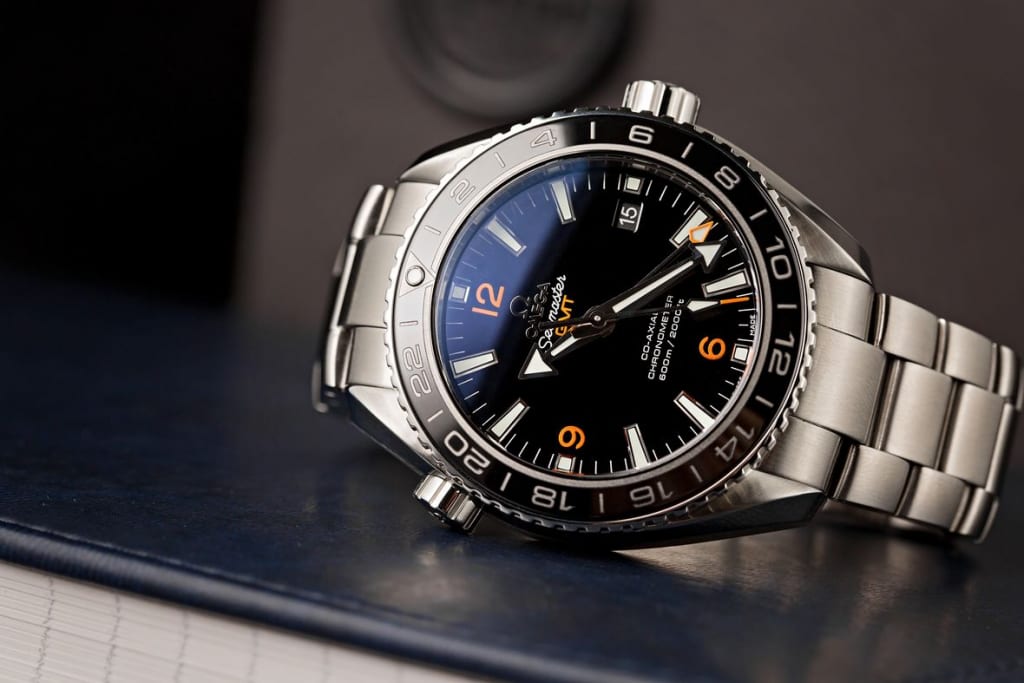
When investing in a luxury timepiece like an Omega Seamaster or Speedmaster, it is crucial to ensure that you are purchasing a genuine watch. Counterfeit watches are becoming increasingly sophisticated, making it more difficult for unsuspecting buyers to distinguish between a real and a fake watch. However, there are several ways to learn how to spot a fake Omega watch:
- Buy from authorized dealers: The safest way to ensure you are purchasing a genuine Omega is to buy from an authorized Omega retailer or boutique. These dealers are certified by Omega and only sell authentic watches.
- Check the serial number: Every genuine Omega watch has a unique serial number engraved on the case back. You can verify the authenticity of your watch by checking the serial number with Omega or an authorized dealer.
- Examine the quality: Genuine Omega watches are made with high-quality materials and exhibit exceptional craftsmanship. Pay attention to details such as the smoothness of the second hand, the sharpness of the engravings, and the overall weight of the watch.
Omega Seamaster vs Speedmaster: Final Thoughts
In conclusion, the Omega Seamaster and Speedmaster are both exceptional timepieces that cater to different needs and preferences. The Omega Seamaster line is a versatile and water-resistant watch collection designed for underwater adventures, while the Speedmaster is an iconic chronograph with a rich history in motorsports and space exploration.
Ultimately, the choice between the two models comes down to personal preference, considering factors such as style, intended use, budget, and emotional connection. To make an informed decision, it is recommended to experience both models firsthand at an Omega boutique or authorized retailer.
Whichever model you choose, you can be confident that you are investing in a timepiece of exceptional quality and heritage. Both the Seamaster and Speedmaster have earned their place in history and will serve as a symbol of your personal style and values for years to come.




